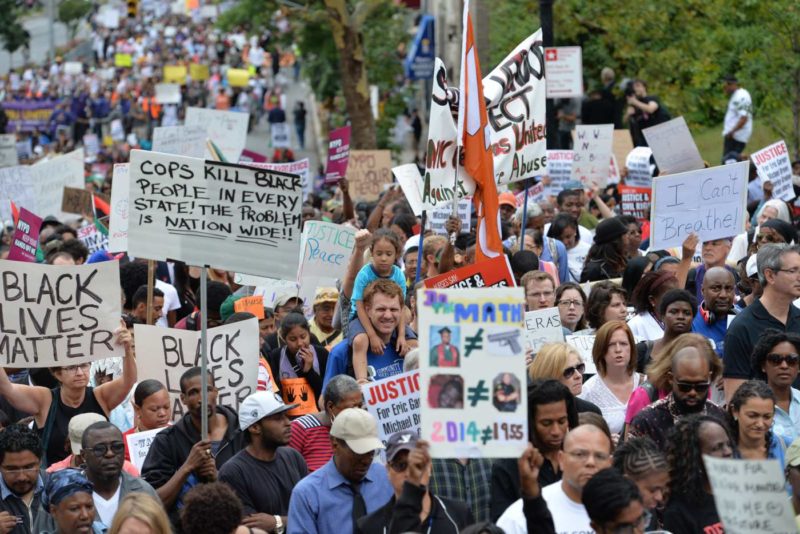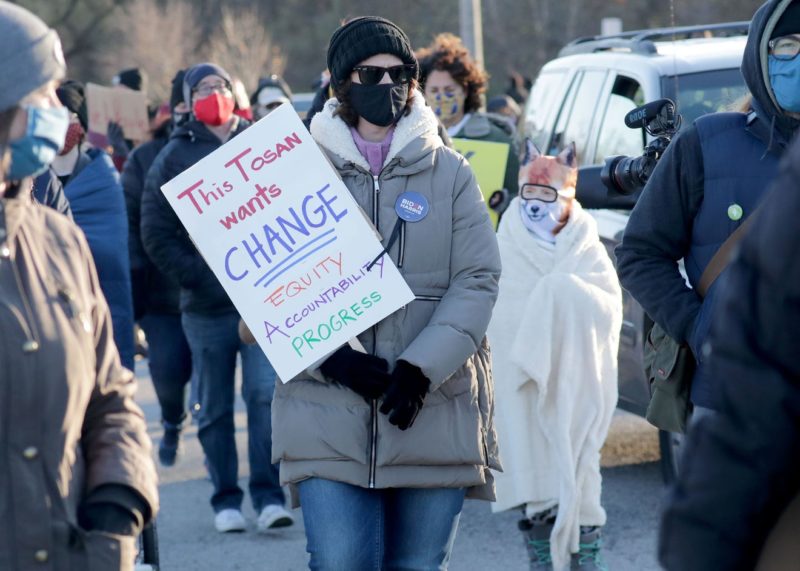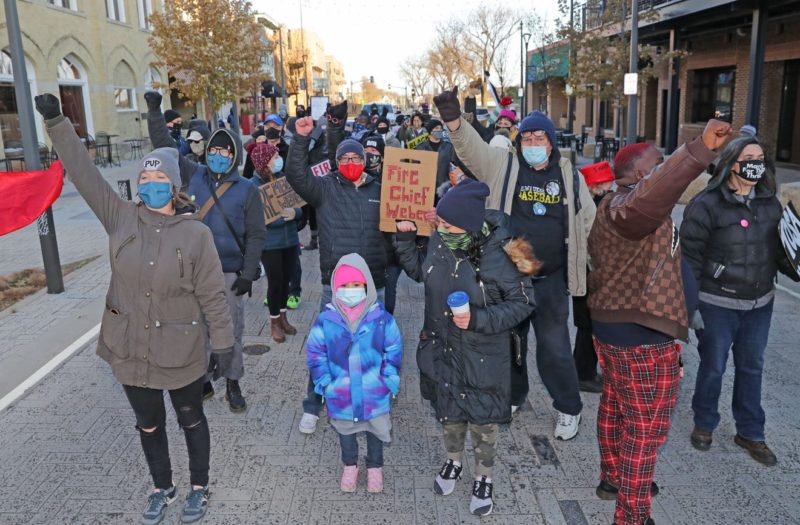Special News Series: Rising Up For Justice! – ‘The police are making us look bad’: Protesters march through Wauwatosa
Share
Explore Our Galleries
Breaking News!
Today's news and culture by Black and other reporters in the Black and mainstream media.
Ways to Support ABHM?
Introduction To This Series:
This post is one installment in an ongoing news series: a “living history” of the current national and international uprising for justice.
Today’s movement descends directly from the many earlier civil rights struggles against repeated injustices and race-based violence, including the killing of unarmed Black people. The posts in this series serve as a timeline of the uprising that began on May 26, 2020, the day after a Minneapolis police officer killed an unarmed Black man, George Floyd, by kneeling on his neck. The viral video of Floyd’s torturous suffocation brought unprecedented national awareness to the ongoing demand to truly make Black Lives Matter in this country.
The posts in this series focus on stories of the particular killings that have spurred the current uprising and on the protests taking place around the USA and across the globe. Sadly, thousands of people have lost their lives to systemic racial, gender, sexuality, judicial, and economic injustice. The few whose names are listed here represent the countless others lost before and since. Likewise, we can report but a few of the countless demonstrations for justice now taking place in our major cities, small towns, and suburbs.

To view the entire series of Rising Up for Justice! posts, insert “rising up” in the search bar above.
‘The police are making us look bad’: Protesters march through Wauwatosa calling for change
By Ricardo Torres, Milwaukee Journal Sentinel

…[P]rotesters marched through the streets of Wauwatosa on Sunday calling for justice for 17-year-old Alvin Cole and demanding change in the Wauwatosa Police Department….
[A] group of about 50 people on foot, and about a dozen more in cars, … marched through Wauwatosa neighborhoods. The event was planned by the activist group The People’s Revolution in collaboration with Tosa Indivisible.
In February, Cole was killed by Wauwatosa police officer Joseph Mensah. In October Milwaukee County District Attorney John Chisholm decided not to charge Mensah with any crimes. That decision sparked days of protest, unrest and clashes between law enforcement and protesters. Many have called for Mensah to be prosecuted and for Chief Barry Weber to be fired. Cole was the third person Mensah has killed on the job in five years.

Mara Kachelski, a teacher at Milwaukee High School of the Arts, heard about the Cole shooting from her students and the more she learned about the incident, the more upset she grew.
“Seventeen-year-olds that make stupid decisions should live long enough to pay the consequences of their decision,” Kachelski said. Kachelski, a Wauwatosa resident, knows there are good police officers in the department but is frustrated with how they have handled the protests. “It’s a great place to live and the police are making us look bad,” Kachelski said.
As the marchers made their way through Wauwatosa neighborhoods many residents came out of their houses and held “Black lives matter” signs or held up their fists in support of the protesters.
“They have a legitimate beef, they’ve had this happen to them for years and years,” Pat Faherty said standing on her front porch. “I don’t believe in violent marches but this is a peaceful march and they have the right to do this.”
“I had 25 National Guard vehicles drive up my street,” Pat Faherty said about those tense days. “It was a lot of overkill. They were up there, I could hear (the protesters). I could see the helicopters. I could see the police drones. I’m like ‘This is Milwaukee. Aren’t we able to talk about it? Are we?’ I didn’t know what to feel.”
Read the full article here.
More Breaking News here.
Explore the ABHM galleries here.









Comments Are Welcome
Note: We moderate submissions in order to create a space for meaningful dialogue, a space where museum visitors – adults and youth –– can exchange informed, thoughtful, and relevant comments that add value to our exhibits.
Racial slurs, personal attacks, obscenity, profanity, and SHOUTING do not meet the above standard. Such comments are posted in the exhibit Hateful Speech. Commercial promotions, impersonations, and incoherent comments likewise fail to meet our goals, so will not be posted. Submissions longer than 120 words will be shortened.
See our full Comments Policy here.